Saving ponds, saving species: looking back on Flagship Ponds 2015-2017
12th December 2017
Flagship Ponds are the very best of Britain’s ponds – sites of national and even international importance because of the threatened species or communities they support.
They are the freshwater gems which stand head and shoulders above the rest, a truly magical and unique resource which provide a glimpse of lost landscapes – a freshwater heritage which once teemed with wildlife.
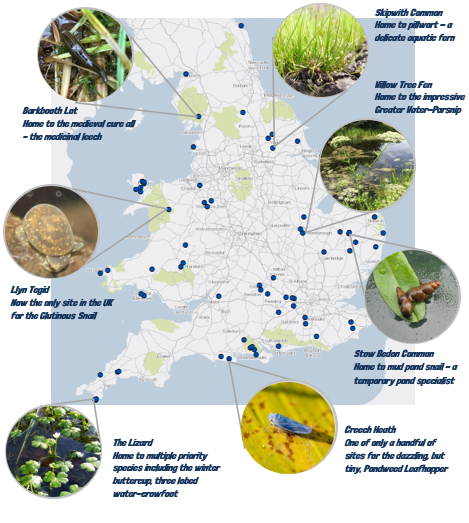
Many of our nation’s most beautiful and biodiverse waterbodies have degraded irrevocably – habitat loss, pollution and poor management has reduced the number of high quality ponds to less than 1% of the total pond resource. It is critically important that the remaining sites are well protected.
Over the last 3 years (2015 to 2017), Freshwater Habitats Trust with funding from the Heritage Lottery Fund, the Garfield Weston Foundation, the True and Fair Foundation, and others has helped to support the long-term sustainability of more than 70 Flagship Pond sites across England and Wales. This represents a significant selection of all Flagship Pond sites – together they support over 50 priority species, and over a quarter of the aquatic habitat types included in the European Habitats Directive.
Our aim was to work on a bespoke basis with site managers and volunteer groups to ensure that site quality was maintained and that key species were recognised in local management plans. Along the way we’ve met an incredible team of freshwater champions – national and local experts; volunteers willing to give up their time to record species and undertake practical management work; local communities who wanted to learn about and manage their own local pond heritage for the long-term.
You’ll be able to find details about each of our Flagship Pond sites including management plans, species notes and photo gallery on the People, Ponds and Water pages of the website over the next 3 months. But, right now, we wanted to give you a tour of some of our favourites.
Skipwith Common
Skipwith Common is one of three Flagship Pond sites close to the city of York. There are numerous ponds on the common with high biodiversity value, but the site is particularly important because it is one of the last remaining sites in Yorkshire for the increasingly rare fern Pillwort. This delicate aquatic plant is confined to places where low nutrients, fluctuating water levels and grazing livestock limit competition from larger plants. It has declined both in Britain and the rest of Western Europe due to the decline of traditional pastoral landscapes, agricultural intensification, and pollution; and has been lost from nearly half its known sites in the UK.
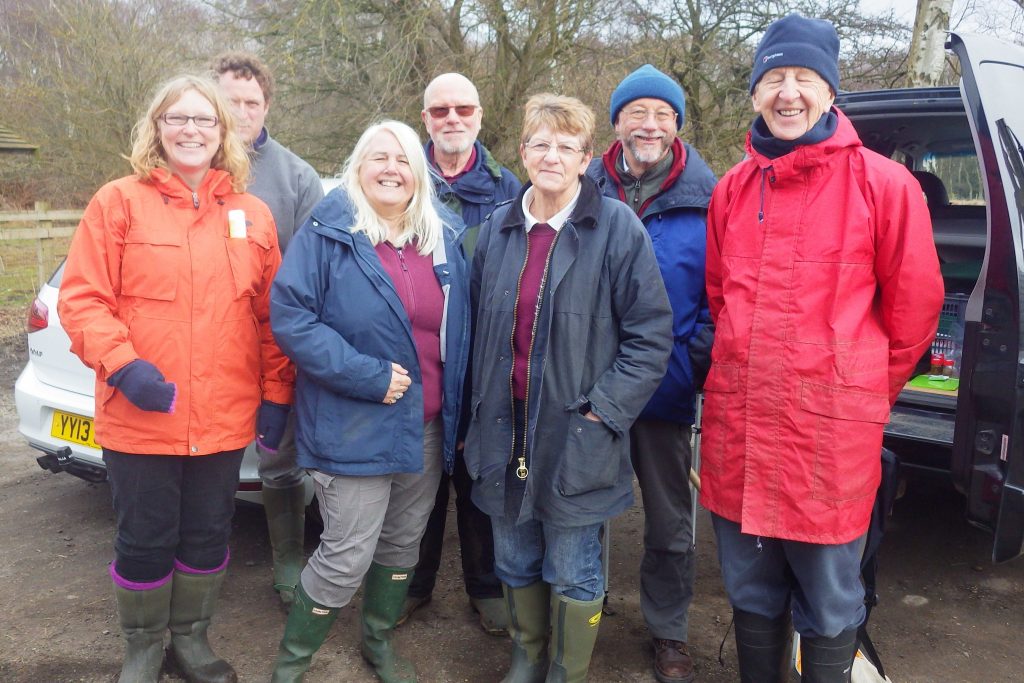
The has been a long history of Pillwort at Skipwith Common, there is even a pond named after this little plant, but it had not been recorded there in recent years and there were fears it may have been lost. Following our management advice, Natural England staff and members of the Friends of Skipwith Common began scrub clearance work from around the pond and with additional funding from North Yorkshire County Council’s LYTAG Landscape Enhancement Fund we were able to hire a contractor to remove a layer of leaf litter which was covering the area where the Pillwort used to grow. The funding also allowed us to create some new pillwort scrapes in an area of the Common away from recreational pressure, where grazing animals would be able to maintain the poached shallow margins which Pillwort needs to thrive.
What we love about this site is the enthusiasm of the local community. Once they knew about the significance of the site at a regional level for Pillwort it was all hands on deck, and their awareness and enthusiasm began a treasure hunt to see if they could find Pillwort in any of the other ponds on the site. We’d almost given up hope, but were thrilled when Mike Wilcox on a Yorkshire Naturalists Union visit, found Pillwort growing on a pond in one of the least visited parts of the Common. The Flagship Pond project has raised awareness of the importance of the ponds on the Common, provided information about pond condition and the status of Pillwort across the site; and put in place management and new pond habitat which should secure the future of pillwort in this part of the world for future generations.
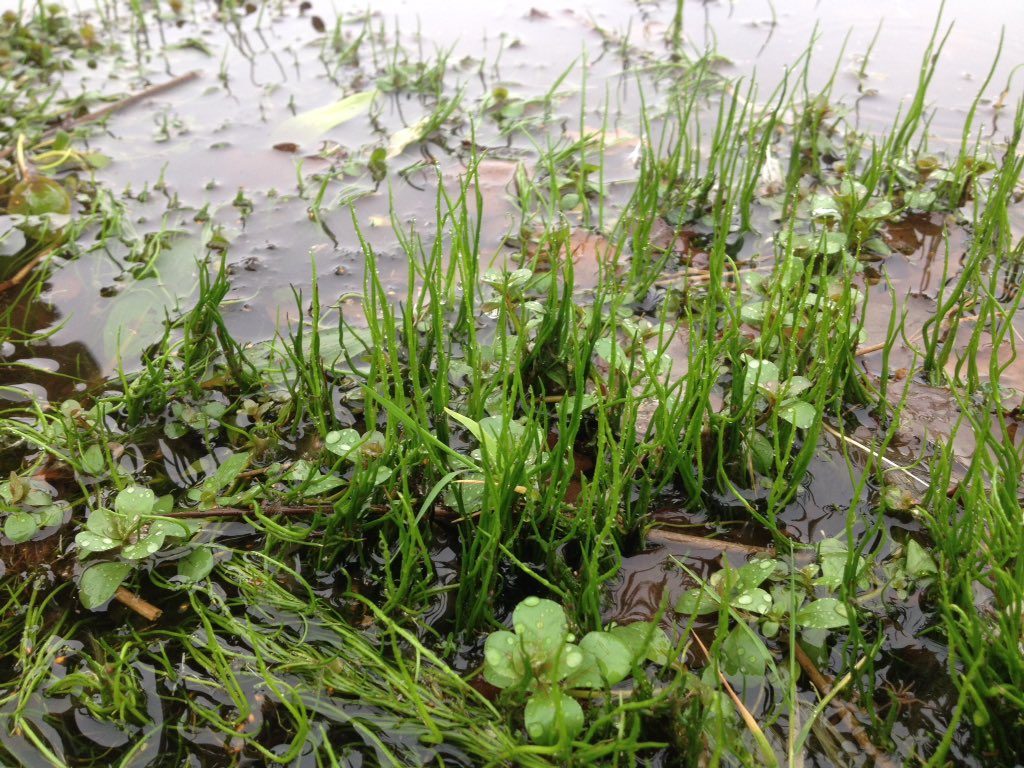
Stow Bedon
Fuel Allotment is part of Stow Bedon Common, a landscape containing numerous natural ponds formed in the late Ice Age by freezing and thawing of upwelling ground water. Such ponds are referred to as pingos or palsa-scars and are a characteristic feature of the Breckland Commons of West Norfolk. Where protected from pollution, Brekland’s pingo ponds are some of Britain’s very finest freshwater habitats, remarkable survivals in a modern landscape – precious and delicate, their richness is hard to believe. Stow Bedon Common, though less famous than its near neighbour Thompson Common, is an area with the potential to be of equal richness and diversity to the very best of the pingo sites, and certainly ranks amongst the most important of our Flagship Ponds.
Stow Bedon Common was predominantly open grazing in the mid-19th century with only scattered trees and bushes. But, like many parts of the country, changes in land management removed the browsing animals, and over time the ponds scrubbed over. At such important sites it is vital to understand the quality of individual ponds before undertaking any management work – it is very easy to damage high quality pond habitats and once this has happened they may never recover.
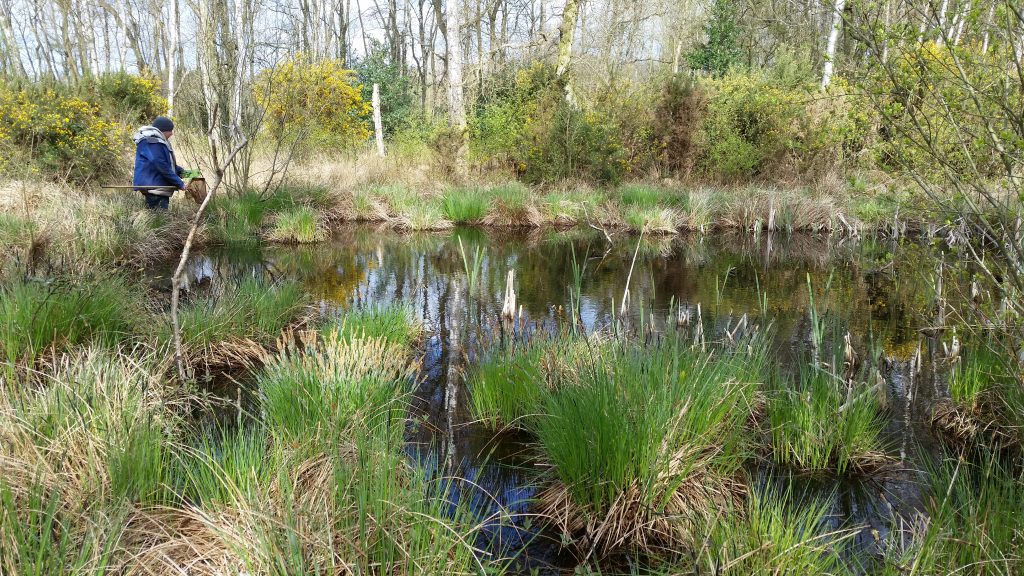
The Flagship Pond project was able to fund professional plant and invertebrate surveys on a subset of ponds on the Common to better understand the communities found there and decide what work, if any, was needed. The survey confirmed that the ponds were not as rich as those on the adjacent Thompson Common, and had probably become unsuitable for some of the specialist pingo pool species, and that while some species tolerate shaded conditions, the ponds supported no distinct fen-carr (or shade dependent) flora or fauna. Management of scrub around the pools was therefore a priority.
However, the survey also revealed that several of the ponds supported large and important populations of the near threatened Pond Mud Snail. A distinctively elongate pond snail, closely associated with pools and pond margins in agriculturally-unimproved habitats. This species has seriously declined; there are post-1999 records from only 47 hectads in Great Britain, and only one hectad record in East Anglia. This grid square includes Stow Bedon and Thompson Commons. In contrast to Thompson Common where it was only found in one pond (41 ponds surveyed), in was found in six ponds on Stow Bedon (16 ponds surveyed). Pond Mud Snails show a preference for ponds with dappled shade which allows some marginal plant growth, but will decline in fully shaded or completely open conditions. A different management prescription was therefore required on ponds where Pond Mud Snail were found.
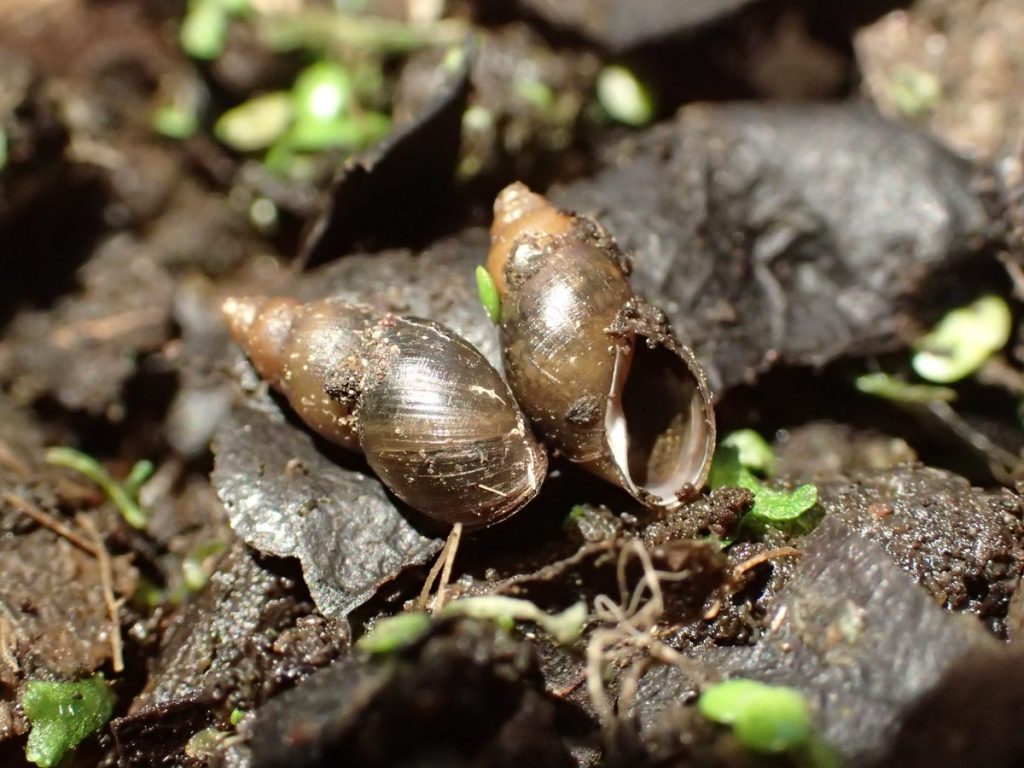
The Flagship Pond project has made it possible to produce a detailed management plan for the ponds on Stow Bedon Common which will help to restore these globally important freshwater habitats, whilst also protecting one of the UK’s fastest declining freshwater molluscs.
Inholms Claypit

Leased by Mole Valley District Council and managed by Surrey Wildlife Trust, this was the last Flagship Pond site to join the project. Although we’d not been there in recent years, Freshwater Habitats Trust had a history of involvement in the site, because we created a series of new ponds there during the Millions Pond Project in 2011. You may be wondering how a group of relatively new ponds qualified for best of the best Flagship Pond status? Well, this site is now home to the very rare Starfruit (Damasonium alisma), an annual plant that grows on acidic mud by small ponds where the habitat is kept open by fluctuating water levels and disturbance by grazing animals. Starfruit was once relatively widespread but is now threatened with global extinction.
This year, our PondNet survey has been checking all of the historic Starfruit sites in the UK. Sadly, in 2017 we didn’t find it growing at any of them, except here at Inholms Claypit. It was introduced to two of the ponds created in 2011 by the Million Ponds Project, and has been doing well, numbering several hundred plants this year. The absence of Starfruit from the other pond sites is worrying and we desperately need research to understand why conservation efforts have been unsuccessful.
Inholms Claypit is not grazed, and will need manual management and disturbance to keep the ponds clear from scrub and to maintain the bare substrate it needs for germination. But, too much disturbance from visitors to the site could also threaten the plants, as they thrive in clean water which is free from recreational pressure.
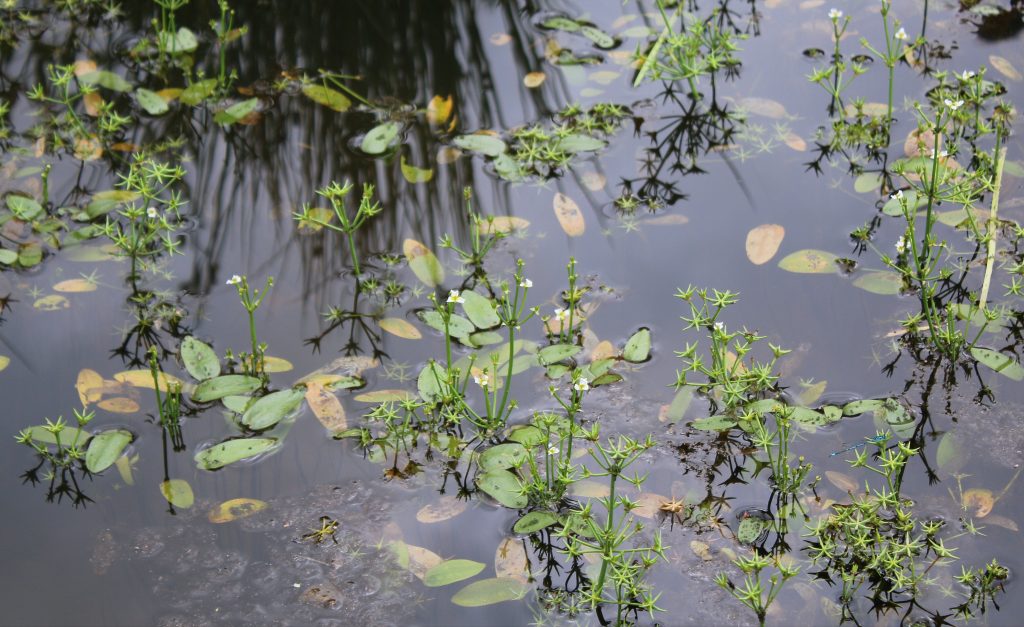
With funding from Flagship Pond project, we were able to undertake some emergency TLC of the ponds – including clearance of a large area of willow scrub, and installation of some visitor proof fencing around the pond. We also funded excavation work to enlarge some of the other ponds created in 2011, to make them ideal habitat for Starfruit, in the hope that the population will grow there as well and have a more secure future on the site.

In the last 6 years, it’s the dedication of local volunteers that have made the site what it is today, and just shows that new ponds can have extraordinary conservation value, saving species which would otherwise face extinction.
Llyn Tegid
Llyn Tegid is the largest natural lake in Wales and the largest body of water covered by the Flagship Pond Project. Ok, you’ve spotted it, Llyn Tegid is not a pond at all, but it was selected for the Flagship Pond project because it supports one of Europe’s most endangered freshwater animals, the Glutinous Snail. This interesting little snail, with a delicate shell covered in its jelly-like mantle, is now found in just this one site in the UK. It used to be a fairy widespread pond snail, and we were lucky enough to see it at its last known location in England in a pond near Oxford in the 1990s.
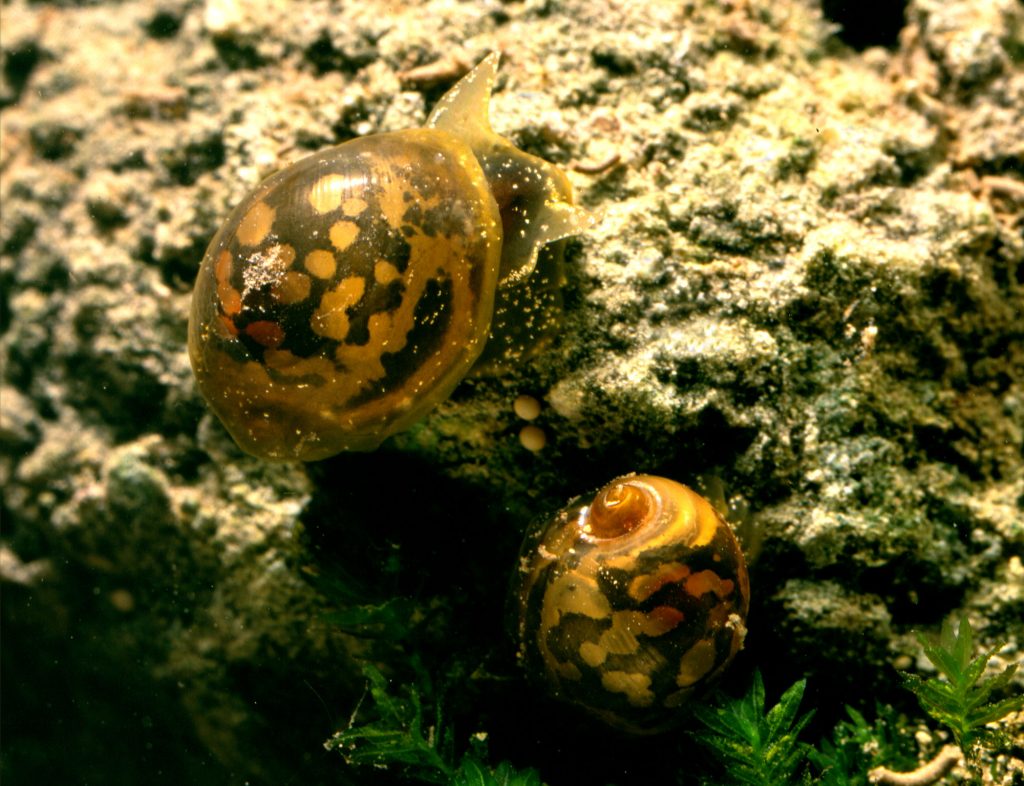
The Glutinous Snail has become so endangered because it needs the cleanest water, free from even trace amounts of pollution. As clean water is so rare now, the modern landscape is really a very hostile place for the poor old Glutinous Snail.
Ian Hughes has been championing the cause for the Glutinous Snail for years and made the discovery of the mollusc on a chance visit to Llyn Tegid. Along with continued work with local land owners to protect its lake home, Ian has successfully reared the first captive bred population of the snail which will safeguard it from extinction, and designed a special snail refuge to protect Glutinous Snail when the water level fluctuates in the lake.
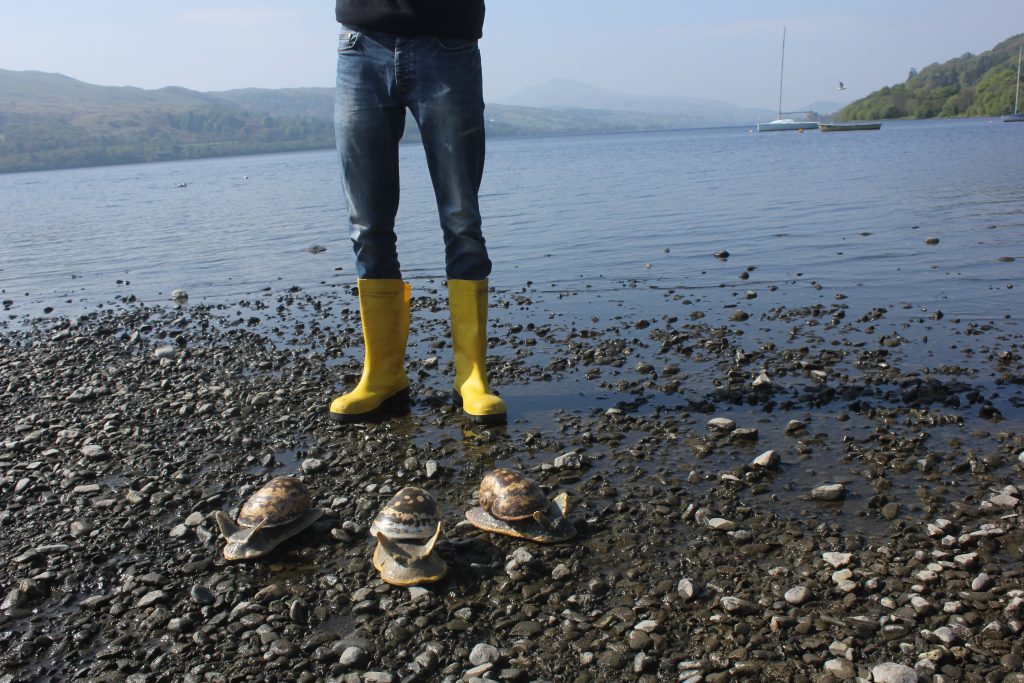
Through the Flagship Pond project, we have also been able to support Ian with raising the profile of snail – it can be difficult to persuade people about the importance of a snail which is less than 2cm in size and which is so fragile that it cannot be handled easily – Ian has created some amazing larger than life models and an accompanying schools pack, opening up this hidden water world to a new generation of freshwater champions.
Thank you!
The Flagship Pond project has been a dream of ours for quite a while. Thanks to the support of the Heritage Lottery Fund, the Garfield Weston Foundation, the True and Fair Foundation, and others, we’ve made it a reality. But we also want to acknowledge the huge contribution of everyone involved with the Flagship Pond sites. It’s the passion, knowledge, skills and love for these amazing places and wildlife that means they have a brighter future.
Find out more
- The Flagship Pond project is part of People, Ponds and Water, our Heritage Lottery Fund supported project working to being about change in awareness and action for freshwater wildlife.
- Follow us on Twitter or Facebook, and join our mailing list for regular updates on Flagship Ponds, our brilliant freshwater wildlife, and issues that concern them.
